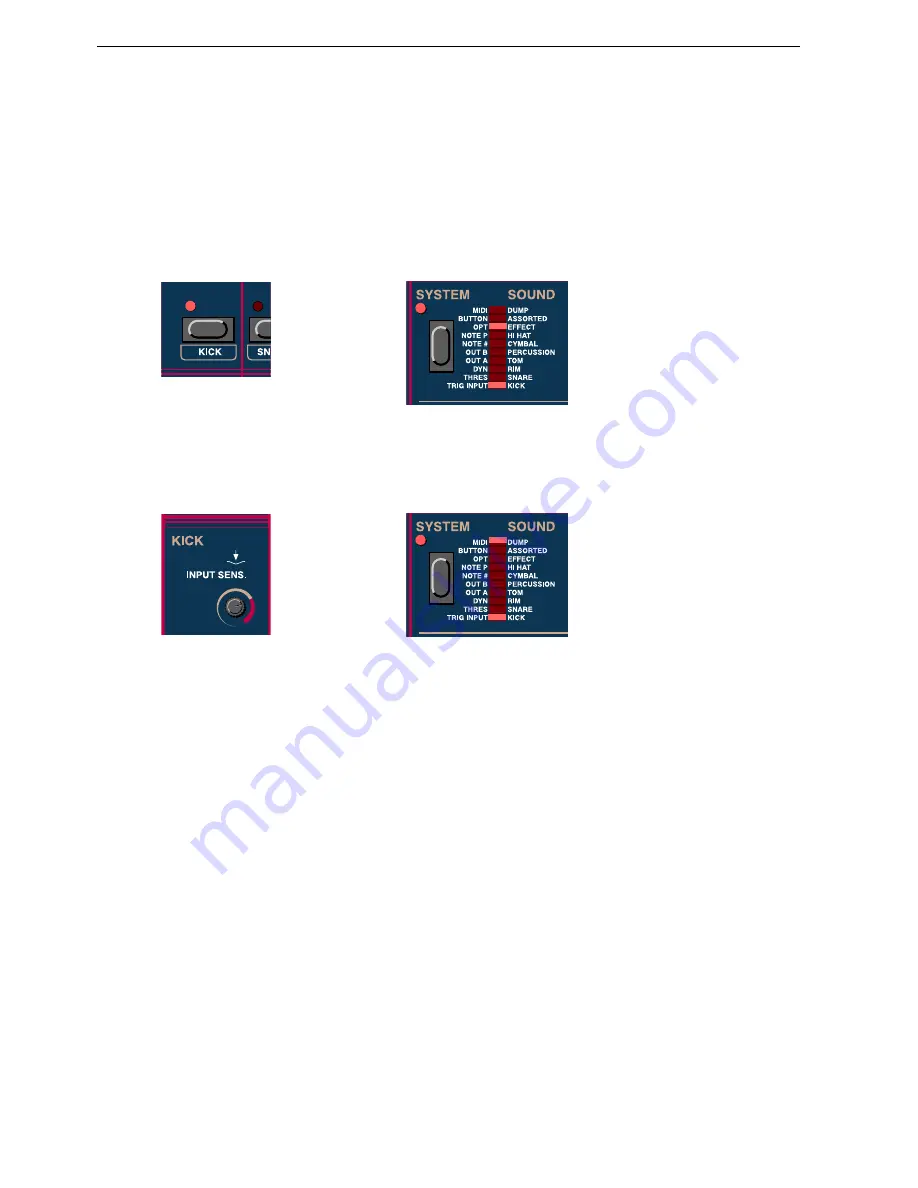
3. Setting up: Setting up the input channels
ddrum4 SE V1.5x
Page 12
A
A
A
A
D
D
D
DJ
J
J
JU
U
U
US
S
S
ST
T
T
TIIIIN
N
N
NG
G
G
G
T
T
T
TH
H
H
HE
E
E
E
IIII
N
N
N
NP
P
P
PU
U
U
UT
T
T
T
S
S
S
S
E
E
E
EN
N
N
NS
S
S
SIIIIT
T
T
TIIIIV
V
V
VIIIIT
T
T
TY
Y
Y
Y
1. Choose the Trig Input option from the system menu by pressing the
S
YSTEM
button until the
T
RIG
I
NPUT
segment of the
S
YSTEM
I
NDICATOR
bar lights up. Select the channel you want to adjust by
pressing the corresponding
C
HANNEL
button. Hit the pad (not the channel button) and look at the
C
HANNEL
LED
, located above the (selected) channel button. It will dim briefly when the channel
receives a trig signal. In this System mode, the
S
YSTEM
I
NDICATOR
bar will indicate the trig input
level.
2. Adjust the trig input level with the
I
NPUT
S
ENSITIVITY
knobs. Turning the
I
NPUT
S
ENSITIVITY
knob clockwise will make the trig input more sensitive. You should adjust the
I
NPUT
S
ENSITIVITY
knob so that the top segment of the
S
YSTEM
I
NDICATOR
bar lights up lights up only during the
hardest hits.
IMPORTANT! The sensitivity settings are crucial to the general feel and sound of your ddrum4
SE system. Dynamics is what it’s all about. Take your time and adjust the sensitivity to your playing
style. Do this on a good sound system if you can, in order to really hear what’s going on. Do not
use the I
NPUT
S
ENSITIVITY
knobs as a volume controls. Controlling the dynamic range and con-
trolling the volume of the ddrum4 SE are two completely different things. The I
NPUT
S
ENSITIVITY
knob’s settings are not stored in the ddrum4 SE’s memory.
IMPORTANT! Make sure the dynamic curve setting for each of the channels is set to ‘0’ (recom-
mended) and definitely not to ‘OFF’ (this will spoil your sensitivity settings)! Please refer to
for more info on how to set the dynamic curve.
Summary of Contents for ddrum4
Page 6: ......





























